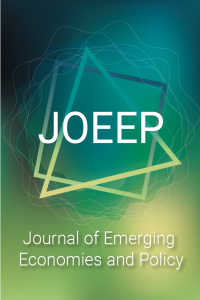Su Kirliliğinin Biyolojik İzleme Kategorilerinin Tartışılması ve Bu Modellerin Batı Marmara Kıyılarına Uygulanması
Program, İzleme, Talep, Metodoloji
Discussion of Biological Monitoring Categories of Water Pollution and Application of These Models to West Marmara Coasts
Programme, observation, demand,
___
- Baltacı, F., Onur, A.K. (2008). Water quality monitoring studies of turkey with present and probable future constraints and opportunities, Desalination, 226, 321-327.
- Bartram, J., Ballance, R. (1996). Water quality monitoring - A practical guide to the design and implementation of freshwater quality studies and monitoring programmes, UNEP/WHO.
- Bayraktar, İ. (2007). Mudurnu deresi ve kollarında su kalitesinin belirlenmesi, Yüksek Lisans Tezi, Sakarya Üniversitesi
- European Commission. (2003). Common implementation strategy for the water framework directive (2000/60/EC), Guidance Document, No:13.
- Gray, N.F. (2005). Water Technology, Water Quality Assessment, 2, 193-254. (Water Quality Observation Studies Presentation as part of Water Products Law no 1380 and Nitrate Regulation).
- Harmsen, J. (2009). Türkiye’de su sektörü için kapasite geliştirilmesi projesi, 3.7.2.7. No’lu Görev Raporu.
- Kazancı, N. & Türkmen, G. (2008). A reserach on water quality of kelkit stream using benthic macroinvertebrates and physicochemical variables, Review of Hydrobiology, 2, 145-160.
- Ministry of Environment and Forestry (2007). National Biodiversity Strategy and Action Plan. Ankara: Tasarım Ofset.
- Ministry of Forestry and Water Issue (2012). Draft National River Basin Management Strategy 2012-2023.
- Schaumburg, J. & Schranz, C. (2004). Ecological classification of macrophytes and phytobenthos for rivers in germany according to the water framework directive, Limnologica, 34, 283-301.
- Zeybek, M. (2007). Çukurca dere ve Isparta deresinin su kalitesinin makrozoobentik organizmalara göre belirlenmesi, Yüksek Lisans Tezi, Süleyman Demirel Üniversitesi.
- Yayın Aralığı: Yılda 2 Sayı
- Başlangıç: 2016
- Yayıncı: Seyfettin ERDOĞAN
İran Ekonomisi İçin Bütçe Açığı, Büyüme ve Enflasyona İlişkin Petrol Gelir Şokları
Guy Ritchie Sinemasında İktisadi Temalar: Sherlock Holmes Karakteri Üzerinden Bir Okuma
Sema YILMAZ GENÇ, Oktay MENECLER
Türkiye’nin Kalkınma Süreci ve Beşeri Sermaye Performansının Değerlendirilmesi
Örgütsel Vatandaşlık Davranışı Ölçeğinin Türkçeye Uyarlanması: Geçerlilik ve Güvenilirlik Çalışması
Oya SANCAR, Ş. Burak BEKAROĞLU
Türkiye’de Eğitim ve Sosyal Göstergelerin Mutluluk ile İlişkisi
Arife YİNANÇ, Nüket KIRCI ÇEVİK, Gökmen KANTAR
Sektörel Bazda Gruplandırılmış Tedarikçiler İçin Ödeme Önceliğinin ÇKKV İle Belirlenmesi
Hilal YİLDİZ, Hatice DERİN KORKMAZ
Ayhan ORHAN, Muhammet Rıdvan İNCE, Abdullah AÇIK
Portekiz Gayrimenkul Pazarının Değerlendirilmesi: Ampirik Bir Analiz
Gualter COUTO, Pedro PİMENTEL, Carla OLİVEİRA, Rui CASTANHO
Hicran Özlem ILGIN, Şaziye Ceren ULUPINAR
Nakliye Sigortalarında Sigortalanabilir Menfaat Kavramının Değerlendirilmesi
